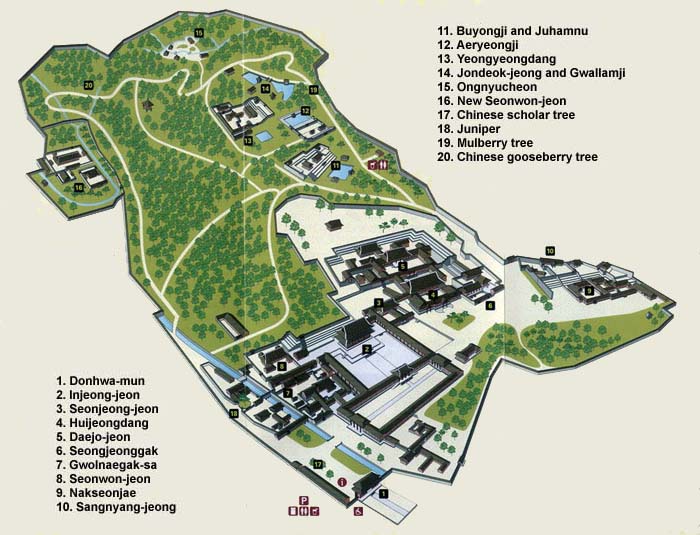 |
Injeong-jeon; Hall of Benevolent Government
The throne room |
Spring is definitely in the air, so we spent Saturday afternoon at Changdeok Palace. This is considered to be the best preserved of the Seoul palaces and also boasts a 78 acre royal garden. We did not have the time to visit the gardens this day, and also thought it would be best to wait till things start growing again, but I can't wait to go back!
 |
| Map of palace grounds. You can see the vast area of the gardens. |
Changdeok Palace was established around 1405 as an extension of nearby Gyeongbuk Palace. Both were burned by the Japanese in the 1590s, and Changdeok was the first to be rebuilt, making it the primary palace. Descendants of the royal family of Korea's magnificent Joseon era lived here until the 1970s.
Nakseon-jae, where the last king and his (Japanese princess) wife lived briefly, was originally built in 1847 for the king's favorite concubine. Ironically, the last titular king of Korea served in the Japanese military. The president of Korea would not allow him to re-enter Korea until shortly before he died. His son, the last of the Joseon descendants, who was actually a US citizen, died in 2005.
 |
| Nakseon-jae courtyard |
 |
| in Nakseon-jae |
One notable feature of the palace grounds is the existence of some rather special trees. The first of these can be seen as soon as you enter the gate, the Chinese scholar trees. They range from 300 to 400 years old and they are beautiful. I love the twisted, gnarly shape of the trunks. There is also a 400 year old mulberry tree, and a 750 year old juniper tree. It is so fantastic to see something so old preserved in the heart of a large city.
 |
| The scholar trees rising above the outside wall. |
 |
| 750 year old juniper tree |
 |
Notice the blue tile roof; only the kings were permitted to have blue tile.
That is why the Presidential Palace of Korea has a blue roof,
and is called "the Blue House". |









No comments:
Post a Comment